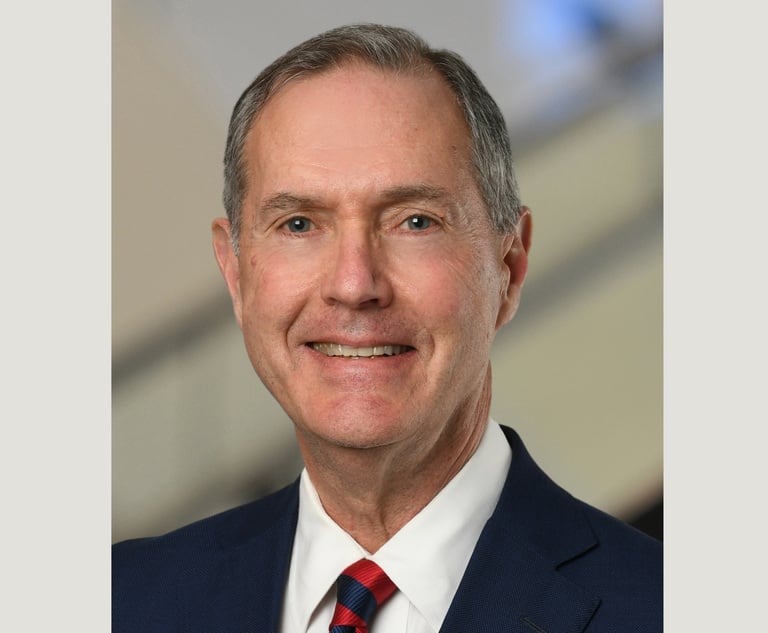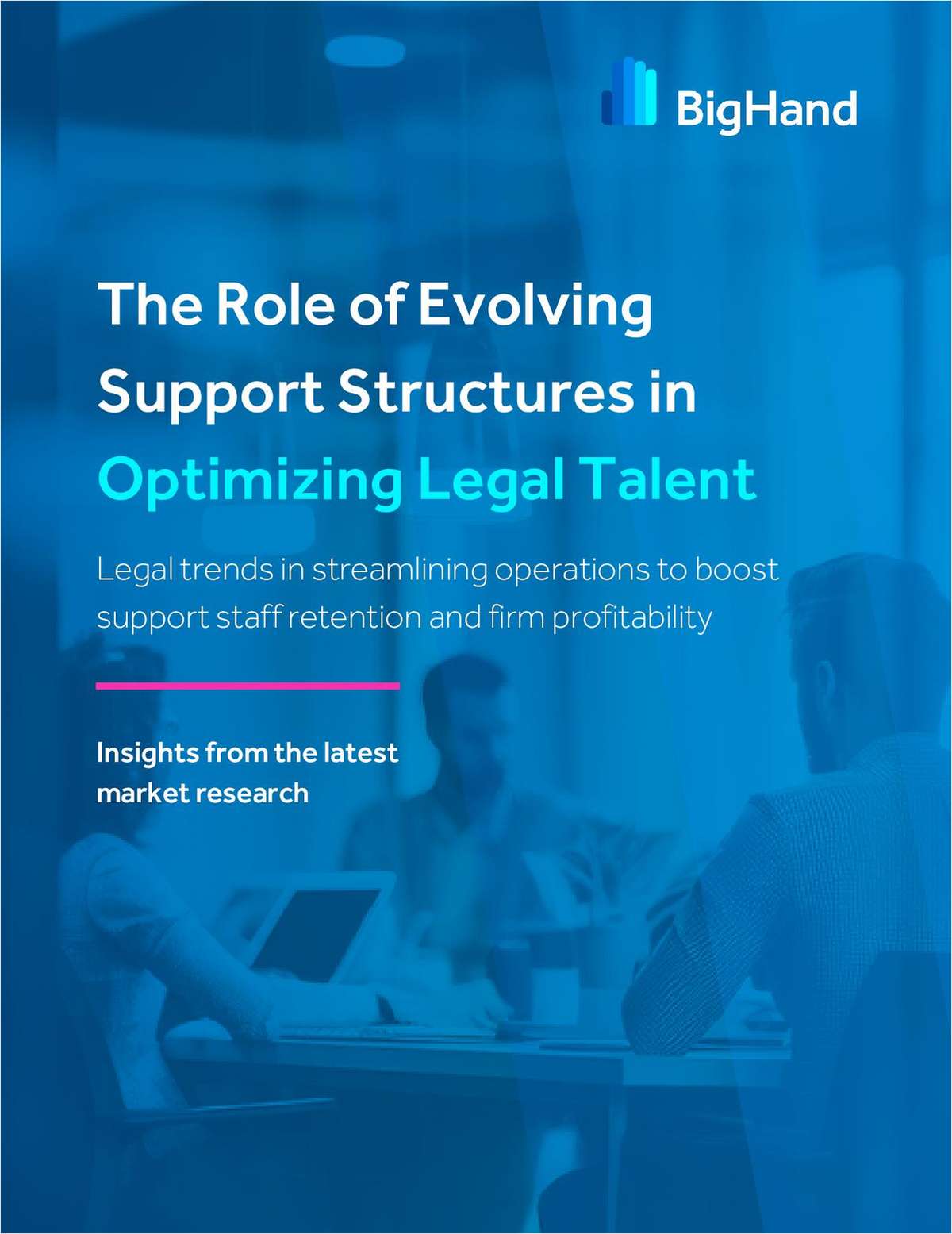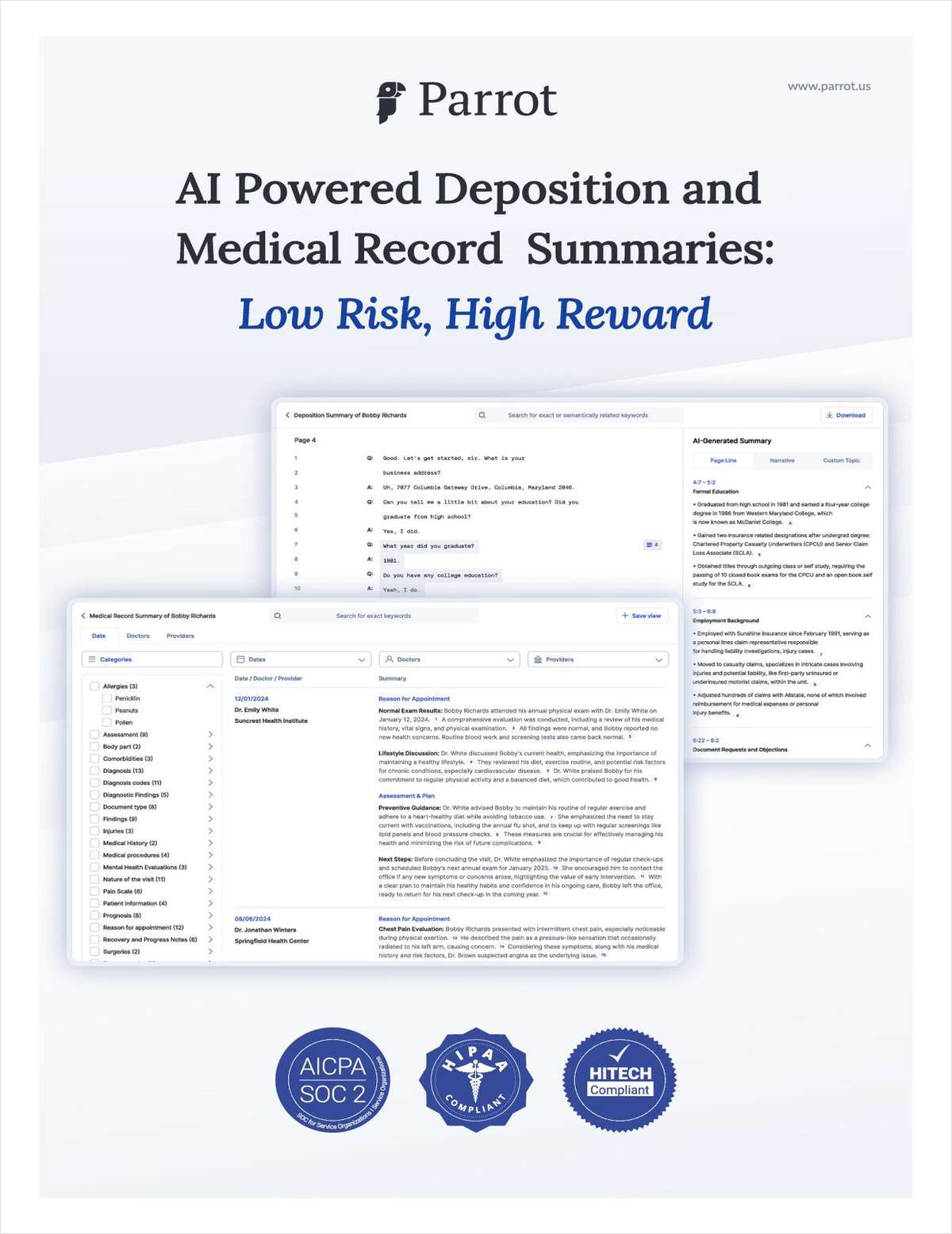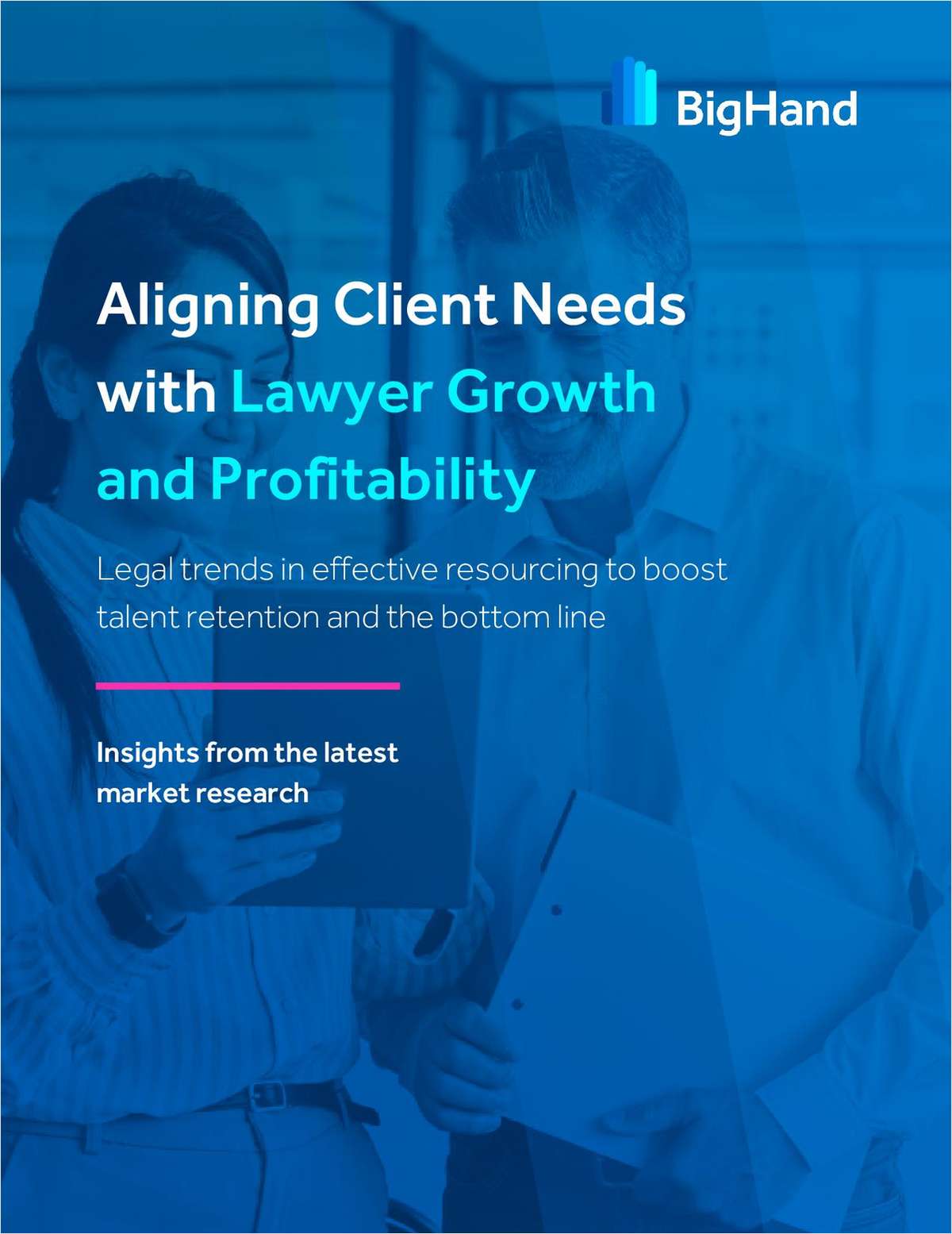Profits Rise, But Big Law's Middle Class Still Feels the Squeeze
Partner profit growth was more evenly distributed among the Am Law 100 last year. But it's still tough to compete with firms boasting average partner profits above $3, $4 and even $5 million.
March 29, 2019 at 03:32 PM
6 minute read
 Photo: Shutterstock.com
Photo: Shutterstock.com
When it comes to law firm profits, the richest firms are breathing increasingly rarefied air. But despite eye-popping numbers at the top last year, growth in Am Law 100 profits was actually, for once, more egalitarian.
The American Lawyer's early reports on 2018 financials showed Kirkland & Ellis and Paul, Weiss, Rifkind, Wharton & Garrison surpassing $5 million in profits per equity partner, and more firms reaching $4 million than ever before. A full 20 firms last year registered at least $3 million in PEP, up from 16 a year ago. Welcome to the club Fried, Frank, Harris, Shriver & Jacobson; Debevoise & Plimpton; Paul Hastings; and Weil, Gotshal & Manges.
But the celebration isn't limited to those firms. The growth in wealth among the Am Law 100 last year was more evenly distributed than in recent years, buoyed by arguably the healthiest market for Big Law services since the Great Recession.
Yes, the richest firms continued to get richer than the rest; but just barely. Most firms—the middle 60 when ranked by last year's 2017 PEP, in fact—grew their partners' profits last year at a rate similar to the richest firms, according to an analysis of ALM data. In 2018, the top of the profitability pack didn't so much break away from the crowd as the back of the pack fell further away.
The firms that comprised last year's Am Law 100 increased their PEP in 2018 on average by 6.7 percent, according to preliminary ALM data. The firms that last year ranked No. 1 to No. 20 by PEP saw that figure rise on average by 7.7 percent. The bottom 20? They grew PEP by 3.8 percent.
But the rich-get-richer dynamic has been seen for years. So, what may have been more surprising in last year's results was that the vast middle of the Am Law 100—the firms ranking from No. 21 to No. 60 by last year's PEP rankings—grew their profits at roughly the same pace as the 20 richest firms. The middle 60 had a growth rate of 7.4 percent, less than a half percent difference from the Top 20.
Objectively, that means there are more partners with more reasons to celebrate a healthy year's performance. But underneath that veneer of short-term success, at most firms, there is a simmering anxiety produced by ever-higher top-end profit numbers.
Can one year of relatively similar growth reasonably be considered a bulwark against star-poaching in an environment where the highest profit firms make more than twice the Am Law 100 average of just north of $2 million?
Opinions on that question range from gloomy (last year would be too little too late) to sanguine: The comparison is moot because the middle group of firms are not competing in the same talent market as the richest firms.
“One robin doesn't make a spring,” said James Jones, a senior fellow at the Center for the Study of the Legal Profession at Georgetown University Law Center. “I think most firms should feel lucky about their performance this past year.”
Still, other industry watchers and some law firm leaders say that most Am Law 100 firms are not broadly threatened by firms where partner compensation is a matter of multiples higher. Those firms are competing for different types of matters and different types of talent than the vast majority of firms.
There are about 15 firms competing for the highest-end legal matters that must pay the highest prices to attract the best talent, said Bruce MacEwen and Janet Stanton of law firm business consultancy Adam Smith Esq.
“Most of the Am Law 100 firms are not really in the arms race for the elite talent that Kirkland and Paul Weiss are going for, frankly,” MacEwen said. “And they are kidding themselves if they think otherwise. They don't need to pay $5 million. They're not going to attract someone who is worth $5 million.”
Thomas Fitzgerald, chairman of Winston & Strawn, where PEP came in last year at $2.16 million, said firms with $5 million in PEP are not his primary competition for lateral hires. But the fight for talent is also very competitive among Winston's peer firms, Fitzgerald said. He said the firm has stuck to its own formula to compensate potential laterals for what the firm believes they are worth, and that has led to the firm walking away from some deals and some prospects going elsewhere.
“If somebody will go to Paul Weiss for the money, they're not going to come to Winston,” Fitzgerald said. “Is it a concern? Of course it's a concern. But I don't think it is our primary competition.”
He added: “It's competitive. But we've gotten our fair share.”
Asked about feeling pressure to keep pace with the richest firms, Larren Nashelsky, chair of Morrison & Foerster, where PEP was just shy of $2 million last year, said, “We are not in an economic arms race with other firms. We really are focused on improving our own performance while staying true to being the place we are.”
Still, Georgetown's Jones said there's no ignoring that in the long term, more and more star partners will migrate toward the largest, richest firms.
“Sooner or later you just are not going to be able to keep that person,” he said.
The impacts of a widening gap in profitability are felt most acutely at law firms that are both smaller and less profitable than the firms at the top of the pack, said Kent Zimmermann, a principal at The Zeughauser Group. Those firms, which may have developed a specialty practice that has commanded relatively higher rates, have a smaller profit pool to stretch as a way to entice their top-billers to stay.
“This small but growing group of firms with $5 million in profits per equity partner brings into focus the increasingly competitive environment for sought-after people,” Zimmermann said. “It just shows how challenging it is going to be for firms to keep up with firms that are double or more of their profitability if they want to go after the same talent.”
This content has been archived. It is available through our partners, LexisNexis® and Bloomberg Law.
To view this content, please continue to their sites.
Not a Lexis Subscriber?
Subscribe Now
Not a Bloomberg Law Subscriber?
Subscribe Now
NOT FOR REPRINT
© 2025 ALM Global, LLC, All Rights Reserved. Request academic re-use from www.copyright.com. All other uses, submit a request to [email protected]. For more information visit Asset & Logo Licensing.
You Might Like
View All
Law Firms Look to Gen Z for AI Skills, as 'Data Becomes the Oil of Legal'

Law Firms Expand Scope of Immigration Expertise Amid Blitz of Trump Orders
6 minute read
Losses Mount at Morris Manning, but Departing Ex-Chair Stays Bullish About His Old Firm's Future
5 minute read
Trending Stories
- 1Uber Files RICO Suit Against Plaintiff-Side Firms Alleging Fraudulent Injury Claims
- 2The Law Firm Disrupted: Scrutinizing the Elephant More Than the Mouse
- 3Inherent Diminished Value Damages Unavailable to 3rd-Party Claimants, Court Says
- 4Pa. Defense Firm Sued by Client Over Ex-Eagles Player's $43.5M Med Mal Win
- 5Losses Mount at Morris Manning, but Departing Ex-Chair Stays Bullish About His Old Firm's Future
Who Got The Work
J. Brugh Lower of Gibbons has entered an appearance for industrial equipment supplier Devco Corporation in a pending trademark infringement lawsuit. The suit, accusing the defendant of selling knock-off Graco products, was filed Dec. 18 in New Jersey District Court by Rivkin Radler on behalf of Graco Inc. and Graco Minnesota. The case, assigned to U.S. District Judge Zahid N. Quraishi, is 3:24-cv-11294, Graco Inc. et al v. Devco Corporation.
Who Got The Work
Rebecca Maller-Stein and Kent A. Yalowitz of Arnold & Porter Kaye Scholer have entered their appearances for Hanaco Venture Capital and its executives, Lior Prosor and David Frankel, in a pending securities lawsuit. The action, filed on Dec. 24 in New York Southern District Court by Zell, Aron & Co. on behalf of Goldeneye Advisors, accuses the defendants of negligently and fraudulently managing the plaintiff's $1 million investment. The case, assigned to U.S. District Judge Vernon S. Broderick, is 1:24-cv-09918, Goldeneye Advisors, LLC v. Hanaco Venture Capital, Ltd. et al.
Who Got The Work
Attorneys from A&O Shearman has stepped in as defense counsel for Toronto-Dominion Bank and other defendants in a pending securities class action. The suit, filed Dec. 11 in New York Southern District Court by Bleichmar Fonti & Auld, accuses the defendants of concealing the bank's 'pervasive' deficiencies in regards to its compliance with the Bank Secrecy Act and the quality of its anti-money laundering controls. The case, assigned to U.S. District Judge Arun Subramanian, is 1:24-cv-09445, Gonzalez v. The Toronto-Dominion Bank et al.
Who Got The Work
Crown Castle International, a Pennsylvania company providing shared communications infrastructure, has turned to Luke D. Wolf of Gordon Rees Scully Mansukhani to fend off a pending breach-of-contract lawsuit. The court action, filed Nov. 25 in Michigan Eastern District Court by Hooper Hathaway PC on behalf of The Town Residences LLC, accuses Crown Castle of failing to transfer approximately $30,000 in utility payments from T-Mobile in breach of a roof-top lease and assignment agreement. The case, assigned to U.S. District Judge Susan K. Declercq, is 2:24-cv-13131, The Town Residences LLC v. T-Mobile US, Inc. et al.
Who Got The Work
Wilfred P. Coronato and Daniel M. Schwartz of McCarter & English have stepped in as defense counsel to Electrolux Home Products Inc. in a pending product liability lawsuit. The court action, filed Nov. 26 in New York Eastern District Court by Poulos Lopiccolo PC and Nagel Rice LLP on behalf of David Stern, alleges that the defendant's refrigerators’ drawers and shelving repeatedly break and fall apart within months after purchase. The case, assigned to U.S. District Judge Joan M. Azrack, is 2:24-cv-08204, Stern v. Electrolux Home Products, Inc.
Featured Firms
Law Offices of Gary Martin Hays & Associates, P.C.
(470) 294-1674
Law Offices of Mark E. Salomone
(857) 444-6468
Smith & Hassler
(713) 739-1250










